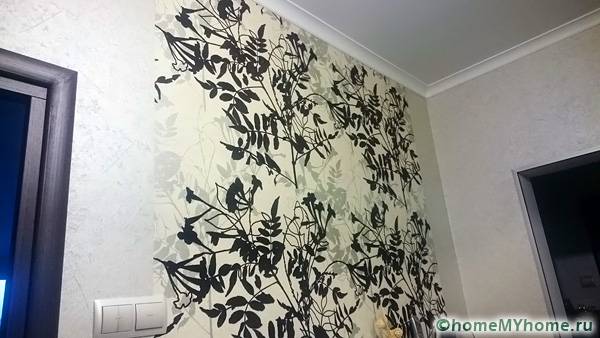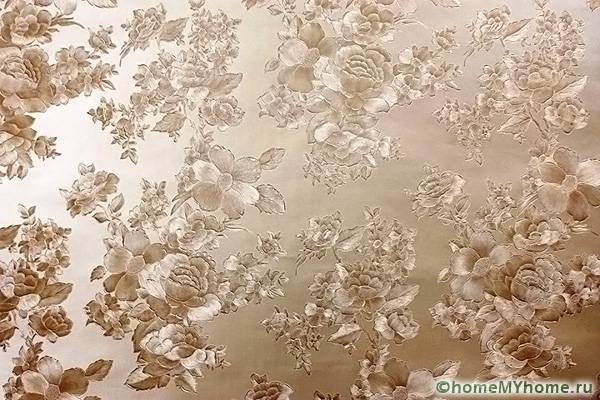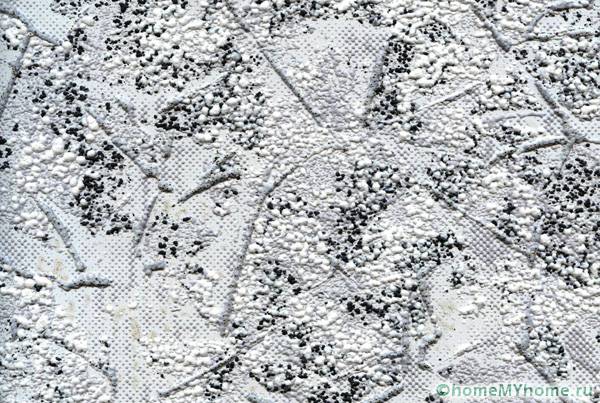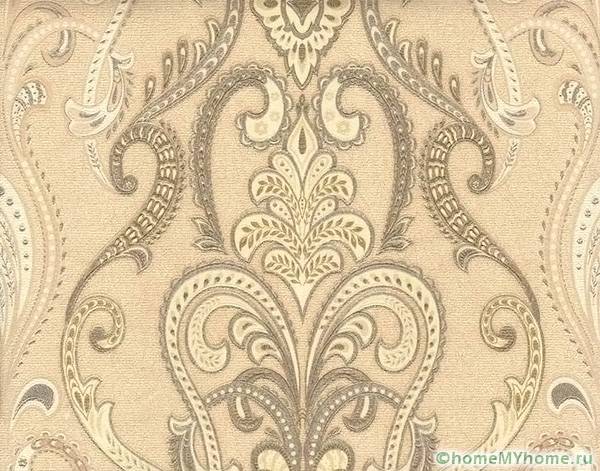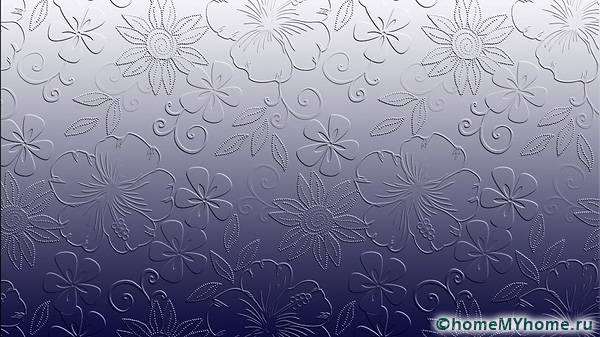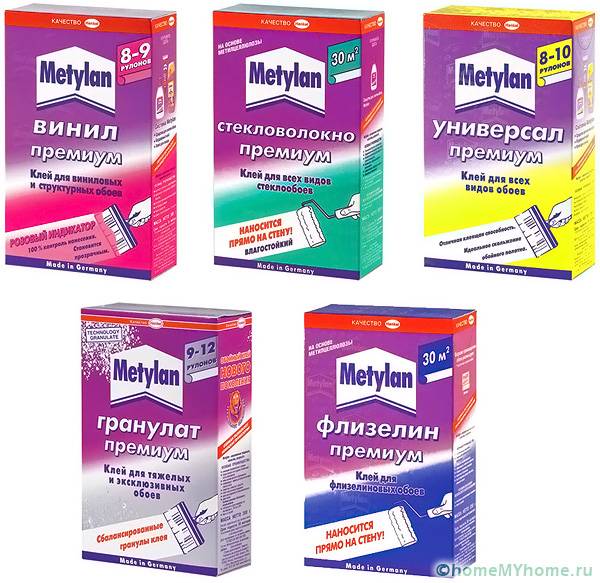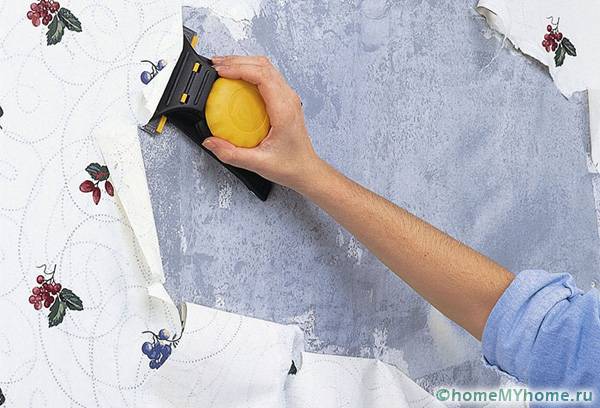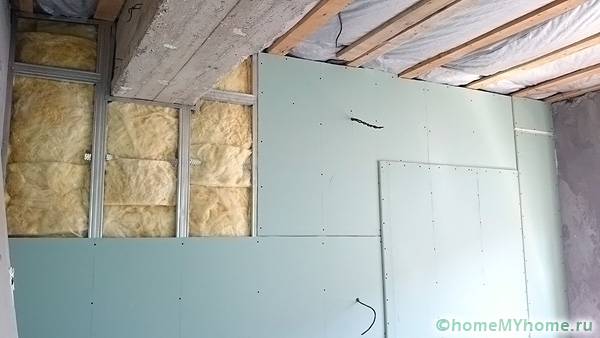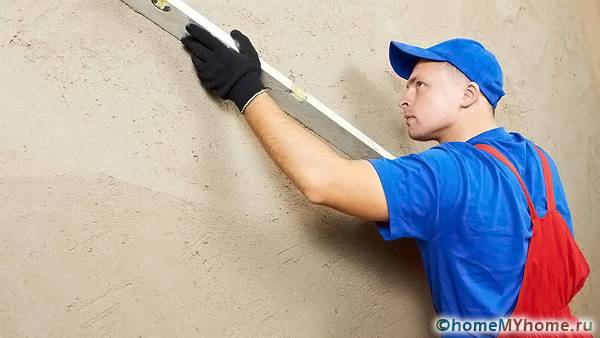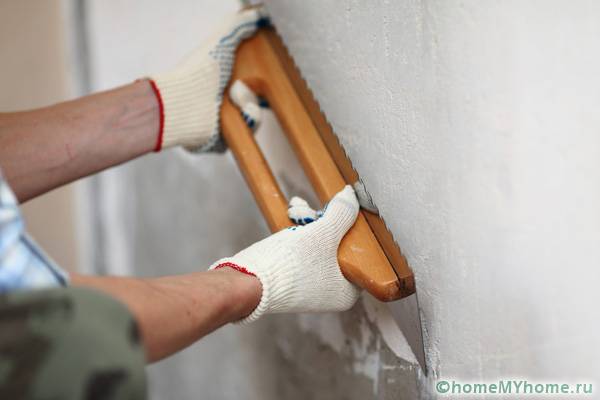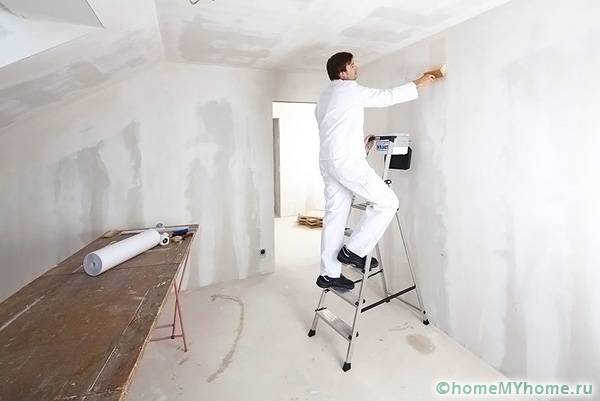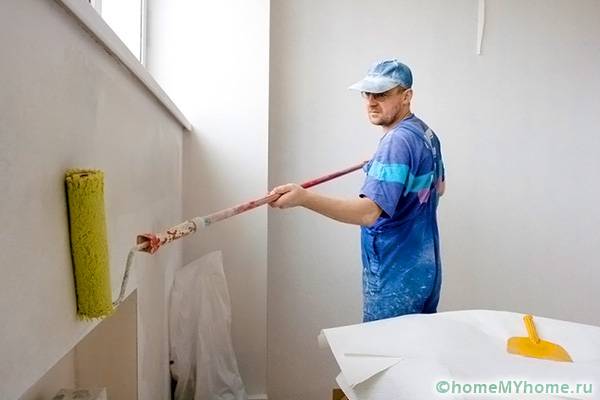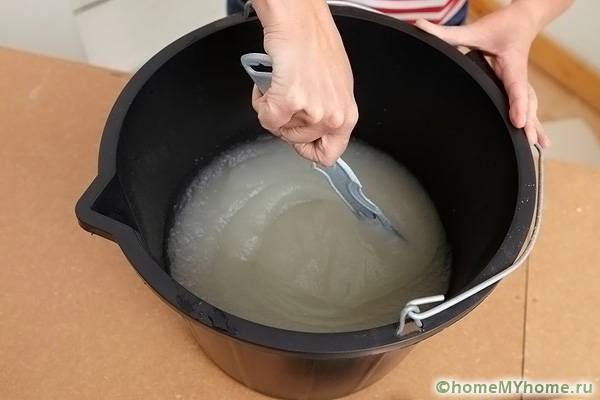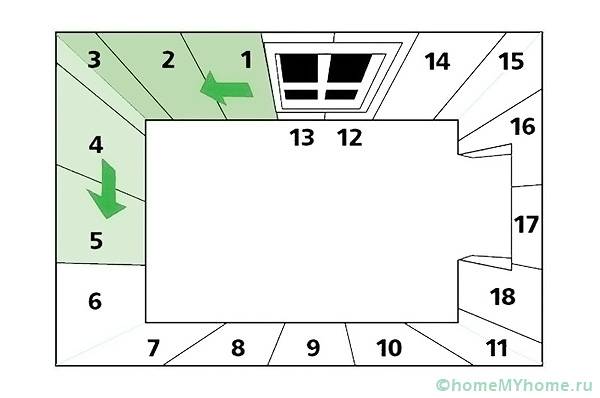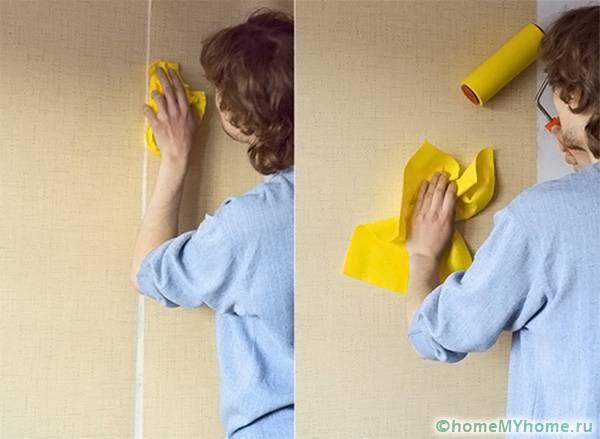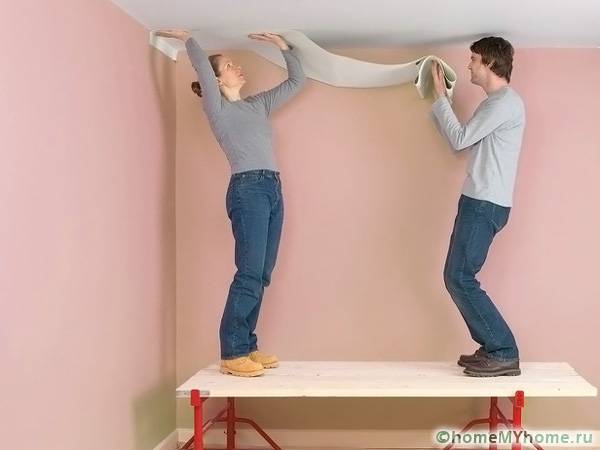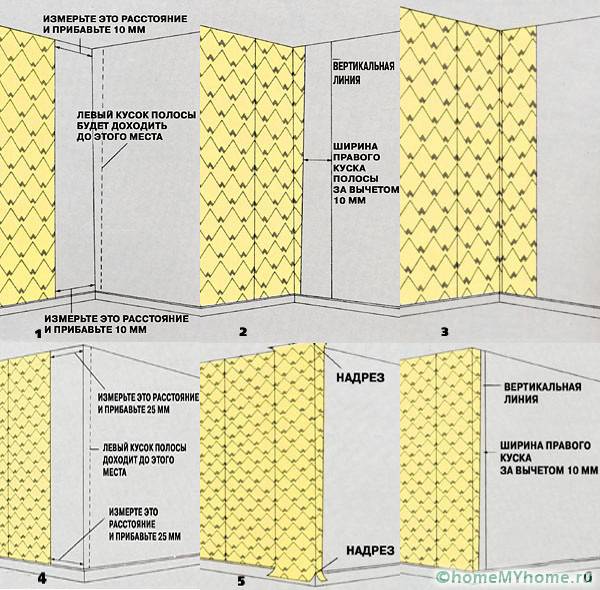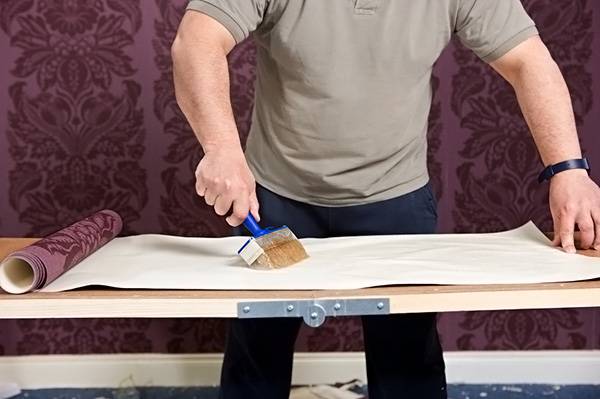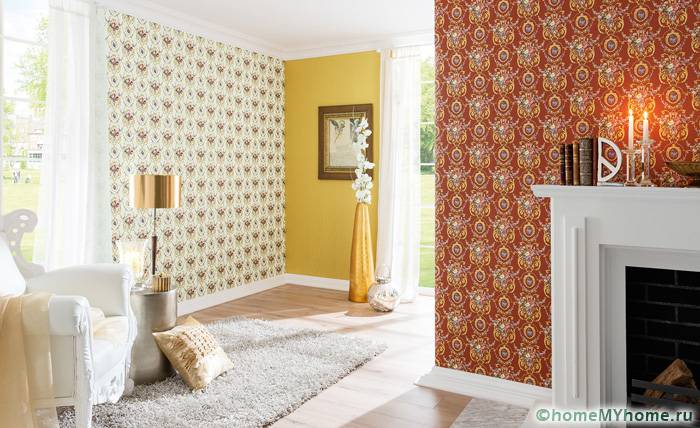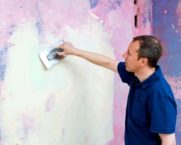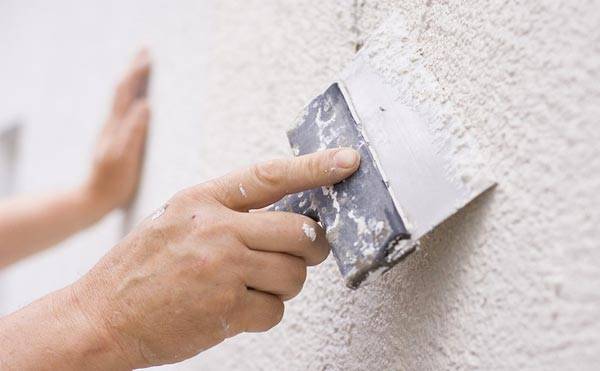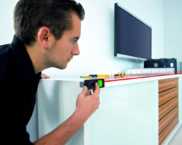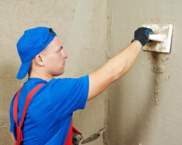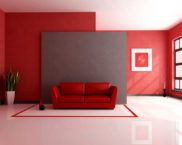How to glue paper-based vinyl wallpaper: work steps and expert advice
Wallpapering is an important part of any renovation. This process is laborious and complex. Many people wonder: how to glue vinyl wallpaper on a paper backing. In this case, it is important to choose high-quality glue, since when using a low-quality composition, everything will need to be finished again. Features of gluing depend on the selected material. Vinyl panels are popular, which are characterized by reliability, wear resistance and UV resistance. Before purchasing the material, it is worth knowing the features of working with this material.

Finishing with vinyl-based canvases provides an opportunity to apply unusual design techniques in the interior
The content of the article
- 1 Properties of vinyl wallpaper
- 2 The nuances of vinyl canvases: positive and negative points
- 3 Varieties of vinyl-based wallpaper
- 4 How to glue vinyl wallpaper on a paper basis: features of the choice of glue
- 5 How to remove old canvases from the walls?
- 6 The need to level surfaces
- 7 How to glue wallpaper correctly: video and stages of work
- 8 How long does paper backed vinyl wallpaper dry?
- 9 Video: glue wallpaper according to all the rules
Properties of vinyl wallpaper
Deciding how to glue vinyl wallpapers on a paper basis, it is worth knowing that such canvases are a layer of PVC, which is distributed on a non-woven or paper base.
The most important advantage of this material is its long service life and resistance to moisture. In this case, you should not glue the canvases near heat sources. The material can be applied to a wide variety of surfaces. Since the panel is characterized by high density, it can mask various cracks or irregularities.
The nuances of vinyl canvases: positive and negative points
Allows you to see how to properly glue paper wallpaper - video. Such canvases can have a non-woven or paper base. All wallpaper models have certain advantages.
Non-woven fabrics have the following advantages:
- such a material does not need to be further processed, while it is enough to apply an adhesive solution to the walls;
- increased resistance to wear;
- allow you to hide cracks and irregularities.
The disadvantages include non-plasticity and some transparency.
Canvases on a paper basis are characterized by the following advantages:
- material density;
- the paper stretches well.
The disadvantages include the rapid absorption of liquid, instability to mechanical damage and the need to press the paper against the wall surface for a long time.
Helpful information! For successful gluing of such materials, you need to prepare the wall surfaces well.
Varieties of vinyl-based wallpaper
There are several options for vinyl materials. They can be distinguished according to their structural characteristics, as well as according to the methods of cladding.
It is worth noting the following types of canvases:
- The lightest type of such coating is silk-screen printing. The surface layer contains polyvinyl chloride, on which various textures are distributed;
- a more complex option is considered to be compact vinyl, which has a top layer that imitates a variety of materials: plaster, wood, stone, brick or fabric;
- The thickest material is considered heavy vinyl. It has a relief surface. Due to the dense composition, excellent strength is created, as well as the ability to remove all surface imperfections;
- chemical embossing fabrics are characterized by a shiny base, from which dirt can be removed perfectly.
Helpful information! Deserve special attention wallpaper with painting... Canvases on a paper basis can then be repainted in any color.
Related article:
Wallpaper for the kitchen washable. Catalog of photo-ideas. Examples of the use and selection of washable wallpaper for the kitchen in a separate publication of our portal.
How to glue vinyl wallpaper on a paper basis: features of the choice of glue
The successful fixing of the coating depends on the correct decision, how and with what solution to glue vinyl wallpaper on a paper basis. Poor glue will provoke the appearance of folds, bubbles and peeling of the cloths from the surface.
The property of gluing this material is that it is heavy, so the glue mass sets quickly and firmly. A good solution allows you to fix the sheet quickly, but at the same time you can have time to place the strips along the joints and align them.
Helpful information! The quantitative indicators specified in the instructions should be observed. Excess mortar passes through the joints and stains the material.
How to remove old canvases from the walls?
Remove the old one before applying a new coating. This will require spatulas of different sizes, a hammer drill and a suitable stripping fluid.
Water or a solution with some kind of detergent is applied to old canvases. Then the wet coatings are left for a few minutes. Then the wallpaper should be removed with a spatula. You can also use sandpaper.
The need to level surfaces
Experts know what to answer the question: how to properly glue paper-based vinyl wallpaper. The secret is in perfectly aligned walls. The alignment method depends on the features of the vertical deflection.
Plasterboard alignment
For a very curved surface, you can apply drywall... It not only evens out the surface of the walls, but also improves the thermal insulation properties of the room.
If the deviation is less than 6 mm, then the material is fixed with a special solution, and if it is more, then a special frame is created. Fastening is done with self-tapping screws. Then the surface is putty and pasted over.
Leveling with plaster
If irregularities are visible even with the naked eye, then it is worth using plaster. You can use different types of plaster. In this case, cement, lime and gypsum compositions are used. Before starting work, you need to clean the surface from dust and dirt.
How to make smooth walls with putty?
The putty solution is applied in two stages. A paint net is placed between the layers. This will protect against microcracks. The topcoat can be spread in several steps. Then the surface can be sanded with sandpaper.
How to glue wallpaper correctly: video and stages of work
Walls can be pasted with different wallpapers. The best options are shown in the photo. The design is selected taking into account the general interior style.
Sticking consists of the following steps:
- walls are being prepared;
- a primer is applied, with the help of which flaws are closed up and miniature irregularities are hidden;
- glue is diluted in the container. You should get a solution without lumps and clots;
- using a level, a line is drawn for gluing the first sheet;
- the electricity must be turned off in the room, and all switches and sockets must be removed from the walls;
- each roll is cut into strips;
- an adhesive composition is applied to the workpiece, while dry places should not be left;
- mortar is also applied to the wall surface;
- sheets are glued end-to-end, without an allowance;
- excess glue is removed with foam rubber or a soft cloth;
- the edges are trimmed with a clerical knife.
Helpful information! There should be no drafts in the room. The canvases will dry within two days.
Related article:
DIY liquid wallpaper. A practical step-by-step guide to making and applying liquid wallpaper yourself in a separate review.
Secrets of the correct gluing of the ceiling
The ceiling surface must be glued before pasting the walls. In this case, it is worth choosing lighter materials.When processing the ceiling, it is worth taking out all the items furniture and carpets. If items cannot be taken out, cover them with plastic wrap.
Note! Vinyl conducts electricity very well, so it's important to remove any exposed wires.
How to glue the material in the corners?
The corners require special care. When the distance to the corner zone is less than the canvas, the sheet is cut off with an overlap. This part will slide to the perpendicular wall surface. Then the second layer is overlapped. The sheets are passed by a special roller.
How long does paper backed vinyl wallpaper dry?
The drying time of the canvases depends on the dryness of the work surface and temperature values. If the humidity is exceeded, and the temperature is slightly reduced, then the finish will dry for a long time.
Also, the drying time depends on the type of glue, the amount of solution used and the microclimate in a particular room.
Non-woven surfaces can dry within a day, and paper surfaces in a shorter time period.
Helpful information! When dry, the paper-backed fabric can shrink significantly, so you need to make sure that the seams do not slide out.
With the help of vinyl wallpaper, you can create a stylish and original interior. When choosing a texture and pattern, it is worth using original design solutions and various combinations.
Video: glue wallpaper according to all the rules




